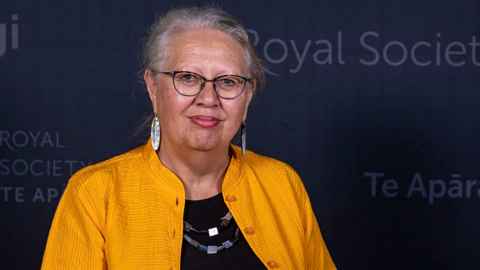Climate research takes on greatest threat to Pacific
9 January 2024
Pacific researchers are taking bold steps to better understand the population dynamics of the region’s 13 million peoples – projected to become 20 million by 2050.

A comprehensive report on Pacific population trends to 2050, released today, is the first product of the University’s major Pacific-led research project on climate mobility.
The research looks at where and how climate-related events and environmental changes (such as cyclones, floods, drought, salination of soil and drinking water, heat stress, and sea-level rise) will impact Pacific people’s decisions to ‘stay in place’, or to move: whether within countries, around the region, or beyond, including to New Zealand.
Professor Yvonne Underhill-Sem MNZM, co-lead of the University of Auckland research team, hopes that actionable research findings with a Pacific lens will assist in addressing the serious challenges of climate mobility. The research aims to better inform government policy making, in support of effective, long-term and sustainable change.
Professor Underhill-Sem, a Cook Islander, is working with the University research team of Dr Roannie Ng Shiu (from Samoa) and Dr Tina Newport (also from the Cook Islands). She says it's been a privilege to work alongside colleagues in Papua New Guinea, Solomon Islands, Kiribati, Tuvalu, Cook Islands, Niue and Tokelau.
“The insights that have been shared with us show a deep understanding of the challenges faced by communities, as well as careful thought about future options."
The Pacific research methodologies the team uses build on shared kinship links and the use of local languages in the 16 community sites where research has taken place.
The first report anticipates that while people will move within, as well as away from, their countries, the majority of Pacific peoples will still be living and adapting to change in their home countries in 2050. The ongoing population growth anticipated in most Pacific communities is expected to more than make up for the those who move out of those countries over the next coming 30 years.
Co-author Emeritus Professor Richard Bedford suggests in the report that looking at five different Pacific population clusters (Western Pacific, Central Pacific, Eastern Pacific, Northern Pacific and French Territories), rather than the traditional three (Melanesia, Micronesia and Polynesia), is a better way to understand the diversity and complexity of the Pacific.
More research reports, policy briefs and digital stories on climate mobility from the University's research team will be produced in 2024.
The research was commissioned by the New Zealand Ministry of Foreign Affairs and Trade, funded with New Zealand’s climate finance. As well as the University of Auckland, researchers come from the University of Waikato and Mana Pacific Consultants - a research team made up of Pacific researchers with strong Pacific knowledge, methodologies, relationships and networks.
-
Regional population dynamics and mobility trends in the Pacific. Size: 4.8 MB.
Document Description: Report to the Ministry of Foreign Affairs and Trade
-
Pacific Population Dynamics in the Context of Climate Change. Size: 985.7 kB.
Document Description: Report to the Ministry of Foreign Affairs and Trade.
Media contact
Pacific media adviser | Kim Meredith
M: 0274 357 591
E: kim.meredith@auckland.ac.nz